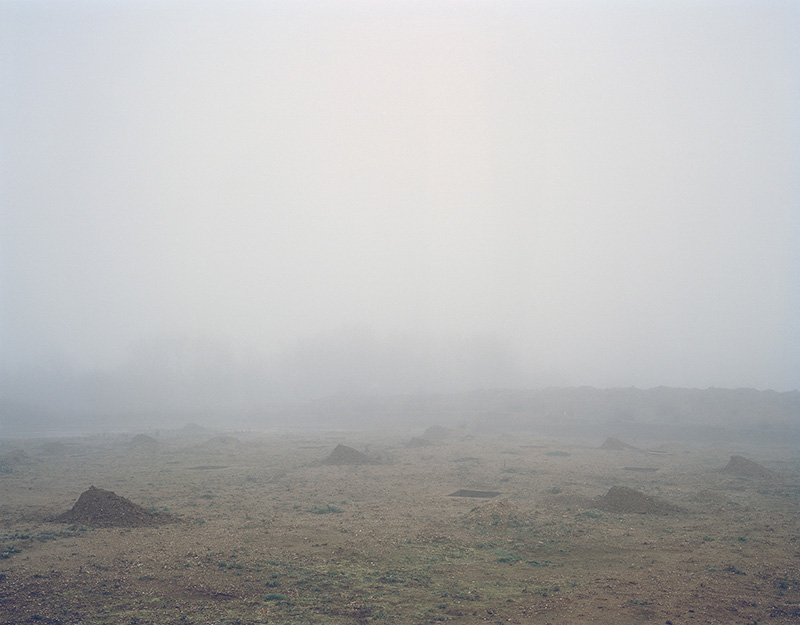ART CITIES:N.York-No Lemon No Melon
 The term “Palindrome” was coined by the Ben Jonson in the 17th Century from the Greek roots palin (again) and dromos (way, direction). A palindrome is a word, verse, or sentence or a number that reads the same backward or forward. The group exhibition “No Lemon No Melon” brings together eight artists whose work uses mirroring and layering to reveal structures and patterns present in the surrounding world.
The term “Palindrome” was coined by the Ben Jonson in the 17th Century from the Greek roots palin (again) and dromos (way, direction). A palindrome is a word, verse, or sentence or a number that reads the same backward or forward. The group exhibition “No Lemon No Melon” brings together eight artists whose work uses mirroring and layering to reveal structures and patterns present in the surrounding world.
By Dimitris Lempesis
Photo: Flowers Gallery Archive
Reflecting the palindromic title, the exhibition “No Lemon No Melon” at Flowers Gallery in New York address the unstable and subjective activity of identifying and manipulating meaning and order within our everyday lives. Through diverse practices of photography, sculpture and video, the 8 artists approach physical and psychological interactions with commonplace materials and natural phenomena by applying transformative processes of layering, reflection, distortion and repetition. The sculptures from Derrick Velasquez’s “Untitled” Series question our physical and psychological interactions with industrially manufactured materials. “Untitled #165” is an accumulation of hand-cut strips of marine vinyl, stacked and layered to create parallel bands of color. Balanced over rigid wooden forms, the strips respond to the natural forces of gravity, forming an arc or curve with curling edges. Mark Dorf’s prints and sculptures from the “Transposition” series address the human impulse to categorize and compartmentalize material existence in terms of oppositions: landscape and city; digital and physical; chaos and harmony. Transposition explores these perceived binaries as a spectrum, revealing the influences between the material languages of landscape, urbanity, and technology. Scarlett Hooft Graafland in “Drop Your Darlings” (2007) depicts an arrangement of translucent balloons, scattered and mirrored across the surface of the prehistoric Lake Minchin, Bolivia, from which almost all water has evaporated. Encompassing analogue photographic practice, performance and sculpture, her photographs emphasize the ‘natural strangeness’ of the landscape with uncanny juxtapositions of everyday objects and materials, reflecting an exchange between the boundless realm of nature and the relative confines of culture. Nicolas K Feldmeyer in his video “Antipodes” records a drop of honey on a garden table which has attracted a small army of ants. By converting the video to black and white, the honey becomes invisible, leaving the ants to perform their mysterious and highly organized dance around a circular void. Karilee Fuglem’s “Holding You As Steady As I Can” is a mobile sculpture with a membrane sensitive to waves of available light and air. Delicate and subtle, it requires that the viewer slows down to witness the tremors caused by the slightest breath of passing air, and to observe the mirroring of light onto the adjacent wall. Tom Lovelace works at the intersection of photography, sculpture and performance, with a practice grounded in interruptions and reinventions of everyday matter, materials and processes. “Site 407” a set of five photographs made in 2008, depicts a landscape that Lovelace reshaped and reconstructed into a repeated sequence of wells and mounds over three months, in a solitary performance using a shovel. The result is a constructed landscape without function, created purely for the camera and accessible only through the resulting photographs. Colette Robbins’ “Archaeological Fiction” series is inspired by the iconography of archaeology, neuroscience, psychology, and the mining of her personal history. Influenced by klecksography (creating images through inkblots) and the well-known psychological test, the Rorschach inkblot test, “Archaeological Fiction” mirrors the human tendency to seek meaning and patterns in visual data, known as apophenia or patternicity. In “A Biopsy of Time No. 2” Sun Yue attempts to mimic the natural sedimentation of clay. Each day, the artist applied alternate layers of metallic oxide and ceramic mud to a small mound of clay, which she then dissected into sample cross-sections, each slice corresponding as a marker of time. A full cycle of 16 days is represented by 16 slices, which increase in size and then diminish, with the last slice on the last day similar to that of the first.
Info: Flowers Gallery, 529 West 20th Street, New York, Duration: 27/7-2/9/17, Days & Hours: Tue-Sat 10:00-18:00, www.flowersgallery.com





